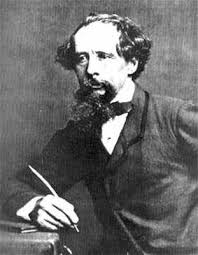This is the first of three posts from 2013 on how writers can engage—or “hook”—their readers from the first page of their novels.
A novel is made up of quite a few elements, among them characterization, dialogue, point of view, setting, and so on. But in my mind, the most important element—without question—is the story’s opening, what we call the HOOK, or more specifically, the narrative hook. If you don’t engage your readers from the outset, they’re not going to care about your characters, your POV, or anything else, for that matter. That’s because they won’t even get to page two.

One of my former writing students…
Think I’m kidding? In addition to working one on one with writers I’ve also lectured at colleges and writers’ conferences since the Stone Age. Often I’ve brought literary agents in to address my classes, and I’ve spoken with many of them at conferences through the years. Way back, the answer to the question, “How do you judge a manuscript?” went something like, “I read fifty to a hundred pages and then decide if I want to represent it.” Okay, that seems reasonable.
But that evolved (or perhaps devolved?) as the years passed and agents became the primary filters for busy publishing house editors, which in turn made them overburdened. Soon I began to hear twenty-five pages, or three chapters, which became the first ten pages, which became five pages, until finally…
 I’m not sure when this began—perhaps a decade or more ago. I do know that I was already informing writers at a conference that I lectured at around ten or eleven years ago of what I referred to as the new Agents’ Mantra.
I’m not sure when this began—perhaps a decade or more ago. I do know that I was already informing writers at a conference that I lectured at around ten or eleven years ago of what I referred to as the new Agents’ Mantra.
WRITER: “How do you judge a manuscript?”
AGENT: “I read the first sentence. If I like it, I read the first paragraph. If I like that, I read the first page. If that works for me, I turn the page.”
Say what! Mike, are you pulling our chain? Well, at that same conference I presented a ninety-minute workshop on the opening hook and told that to the attendees. “Are you kidding me?” and “Yeah, right” comprised the majority of responses. Later that day the conference hosted a literary agents’ panel, two from New York, two from California. Someone asked the panel, “How do you judge a manuscript?”
The reply, from one of the New Yorkers (verbatim): “I read the first sentence. If I like it, I read the first paragraph. If I like that, I read the first page. If that works for me, I turn the page.”
I kid you not. Quite a few heads swiveled around to look at me, dazed expressions on their faces. “Guess you were right,” was the unspoken vibe.
So how do we writers make sure our opening hooks are effective? That will be the focus of my next couple of posts. Trust me, I can’t tell all in just one post.
CHARLIE’S HOOK
I mentioned that I’ve been talking to groups about writing since the dawn of time, and I’d like to share this story from a class that I did a long, long time ago. One of the students, a young guy named Charlie, absorbed my hook lecture with great enthusiasm, and his hand shot up. He begged me to let him read the opening to a novel he was working on, as he felt quite proud of it. So I agreed—and oh, did I regret it. For starters, his first sentence went on and on for over one hundred words. He made excessive use of the passive “to be” verbs (“was,” “were,” etc.) to the point of my eyes glazing over. I could go on, but I’ll just say that, sadly, I had to gong Charlie on his hook. The poor kid slammed down his page and stormed out of the room. I saved the page so that I could show future generations of writers how NOT to open a novel. Here is Charlie’s hook:

Charlie wound up doing okay for himself, the little Dickens!
It was the best of times, it was the worst of times, it was the age of wisdom, it was the age of foolishness, it was the epoch of belief, it was the epoch of incredulity, it was the season of Light, it was the season of Darkness, it was the spring of hope, it was the winter of despair, we had everything before us, we had nothing before us, we were all going direct to Heaven, we were all going direct the other way—in short, the period was so far like the present period, that some of its noisiest authorities insisted on its being received, for good or for evil, in the superlative degree of comparison only.
Okay, you figured out that I’m totally kidding here. This opening to Charles Dickens’ A Tale of Two Cities is one of the most memorable in all of literature.
But AM I kidding? Bottom line is, the sentence DOES go on forever, and it IS loaded with passive verbs, and the question I always ask my writers is, “Would this hook work in today’s publishing climate?” Almost without exception, they say NO. I agree. Why? Because:
“I read the first sentence. If I like it, I read the first paragraph. If I like that, I read the first page. If that works for me, I turn the page.”
In Part Two, what I call “Hook 101,” we’ll break down the hook—what it must accomplish, and some of the options a writer has for achieving this goal of engaging readers.

The very first time I attended a writers conference, I attended your workshop and I remember you talking about this…made an impression on me! I also remember you trying to convince a writer that his line of dialogue shouldn’t read, “Damn,” he cursed. The guy just didn’t see what was wrong with it. I’ve never forgotten that!
Well, Indy, your writing turned out just fine, so I must’ve done something right! 🙂